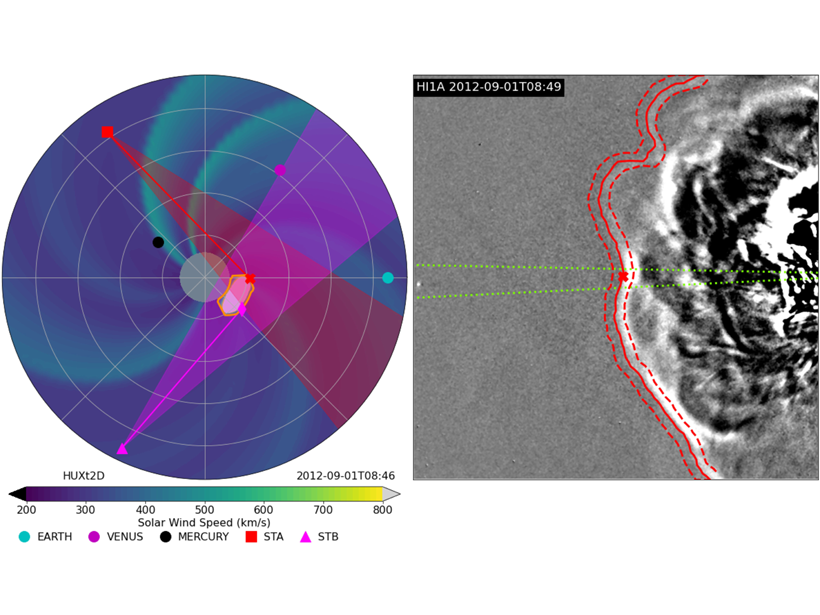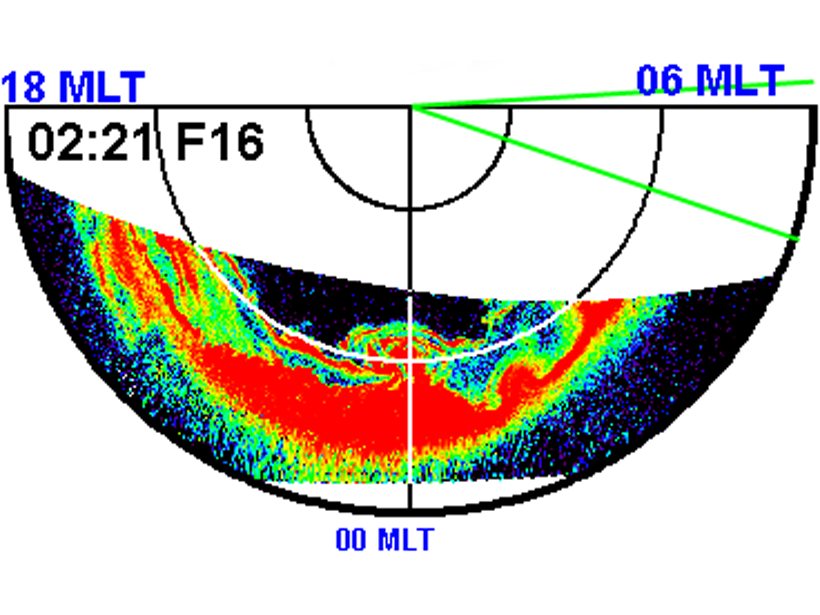A thunderstorm made waves on a rare “bright night.”
space weather (hazard)
Geomagnetic Storms Probably Don’t Cause Mass Cetacean Strandings
Solar-induced geomagnetic activity and mass strandings of whales and dolphins on shorelines both show seasonal patterns, but the beachings likely result from multiple environmental factors.
Terrestrial Radio Signals May Suppress High-Energy Electrons
Naval radio signals may cause the formation of a barrier observed during geomagnetic storms that is seemingly impenetrable by relativistic electrons.
Scientists Claim a More Accurate Method of Predicting Solar Flares
Supercomputer 3D modeling of magnetic fields could help mitigate damage from geomagnetic storms.
Ensemble Modeling of Coronal Mass Ejection Arrival at 1 AU
Heliospheric imaging data can be used in ensemble modeling of CME arrival time at Earth to improve space weather forecasts, treating the solar wind as a 1-D incompressible hydrodynamic flow.
Hesse Receives 2019 Space Weather and Nonlinear Waves and Processes Prize
Michael Hesse received the 2019 Space Weather and Nonlinear Waves and Processes Prize at AGU’s Fall Meeting 2019, held 9–13 December in San Francisco, Calif. The award “recognizes cutting-edge work in the fields of space weather and nonlinear waves and processes from midcareer and senior scientists.”
Power Outage When the Aurora Throws a Curve Ball
Omega-band aurora carries fast propagating electric currents in the azimuthal direction, producing geomagnetically induced currents that can cause power outage on the ground beneath.
Space Weather Lessons from a 1928 Dirigible Debacle
Analysis of a disrupted SOS signal during an early polar expedition showcases the importance of taking space weather into account when exploring new frontiers.
All Hands on Deck for Ionospheric Modeling
Challenges to studying the ionosphere’s ability to conduct electrical currents undercut scientists’ efforts to improve space weather forecasting models. Let’s tackle them together.
Space Traffic Management: Better Space Weather Forecasts Needed
Better forecasts of space-weather driven changes in thermospheric density are urgently needed to ensure safe management of the rapidly growing volume of space traffic in low Earth orbit.









